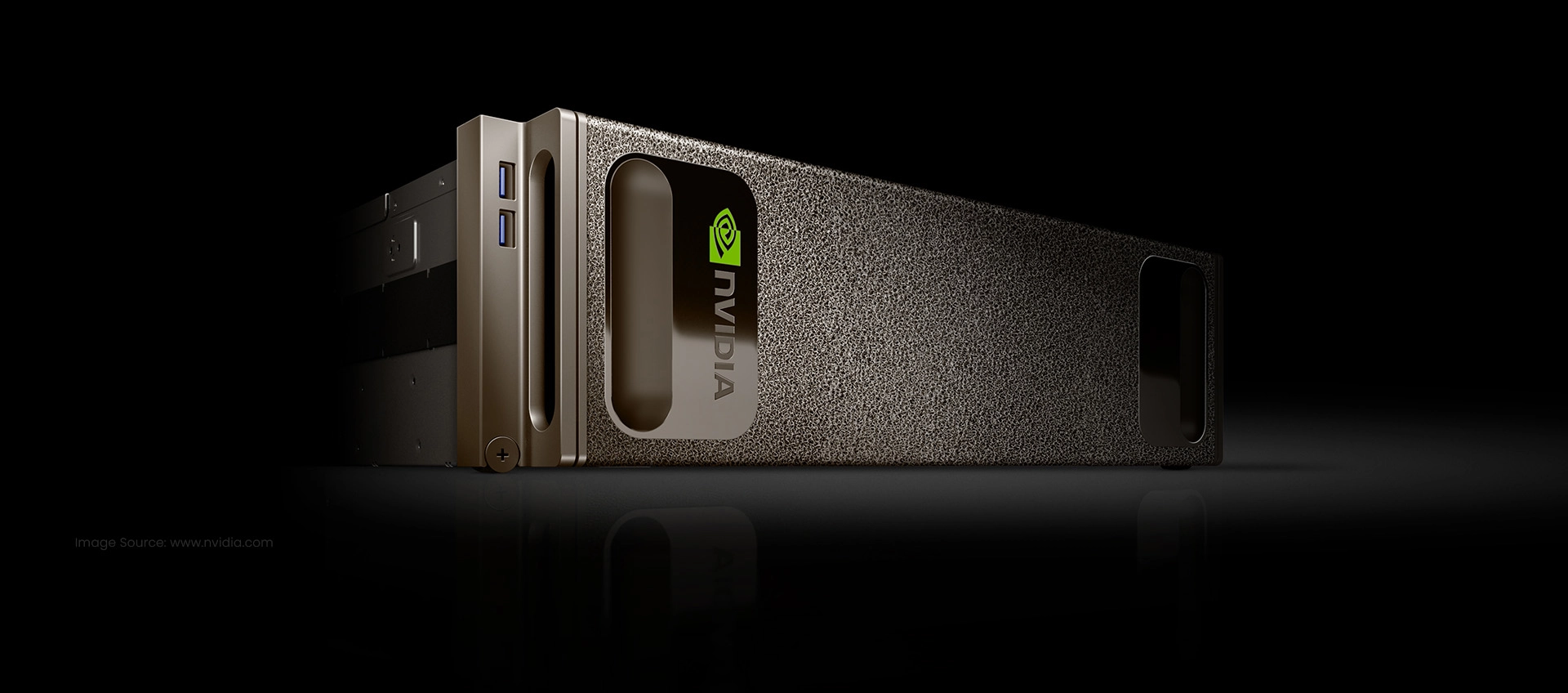
Nvidia’s Project DIGITS: AI Supercomputing Made Accessible
What if you could harness the raw power of a supercomputer, not in a high-tech lab or a cloud data center, but right on your desk? Nvidia’s Project DIGITS makes this futuristic vision a reality. It’s not just another piece of tech; it’s a bold statement—a compact, affordable AI powerhouse designed to spark innovation in classrooms, research labs, startup offices, and creative studios. Forget the limits of traditional computing. With Project DIGITS, Nvidia is saying; The future of AI belongs to everyone.
The Engine Behind It All: The GB10 Grace Blackwell Superchip
The fuel behind Project DIGITS is the GB10 Grace Blackwell Superchip, a marvel of modern engineering that brings together Nvidia’s cutting-edge technologies. This tiny powerhouse delivers an incredible 1 petaflop of AI performance at FP4 precision, making it capable of handling even the most complex AI tasks.
What makes it tick? The super chip combines:

-
CUDA Cores: Perfect for parallel processing.
-
Fifth-Generation Tensor Cores: Essential for powering AI and machine learning models.
-
Grace CPU: A high-performance, energy-efficient CPU with 20 Arm-based cores, developed in collaboration with MediaTek.
This synergy ensures Project DIGITS doesn’t just deliver jaw-dropping performance but does so efficiently and reliably—all while running from a standard power outlet.
Massive Memory and Storage for Big Ideas
When it comes to AI, you need more than raw power—you need room to maneuver. That’s why Project DIGITS is equipped with 128GB of unified memory and up to 4TB of NVMe storage. This setup allows users to work on massive datasets and train models with as many as 200 billion parameters, right from their desks.
But what if your project requires even more? Nvidia has thought of that too. You can link two Project DIGITS systems together to handle models with up to 405 billion parameters. For AI researchers and developers, this kind of scalability is a dream come true.

A Software Ecosystem Built for Innovation
Nvidia knows that hardware is only half the equation. That’s why Project DIGITS comes with a rich software ecosystem designed to support developers at every stage. Running on Nvidia’s Linux-based DGX OS, the system is compatible with all the tools and frameworks that AI professionals rely on, including:
-
PyTorch and TensorFlow for model development.
-
Jupyter Notebooks for interactive coding.
-
Python for scripting and automation.
Additionally, users get access to Nvidia’s comprehensive AI software library, which includes:
-
Development Kits to jumpstart projects.
-
Pre-Trained Models for instant experimentation.
-
Orchestration Tools to streamline workflows.
Even better, Project DIGITS integrates seamlessly with Nvidia’s AI Enterprise software and NGC catalog. This means you can develop and test models locally and then scale them to the cloud or data centers with zero compatibility issues.
Compact, Affordable, and Ready for Your Desk

Forget the sprawling server rooms of yesteryear. Project DIGITS is small enough to fit on your desk, with a form factor comparable to a Mac Mini. Despite its compact size, it’s packed with power and runs quietly—perfect for offices, classrooms, or even home use.
And the price? Starting at just $3,000, it’s surprisingly accessible. Nvidia’s goal is clear: make cutting-edge AI technology available to as many people as possible, from students and researchers to startups and creators.
Who Is Project DIGITS For?
The potential applications for Project DIGITS are nearly limitless, but here are some key examples:
Healthcare: AI models for disease detection, drug discovery, and personalized medicine.
Education: Universities and students can explore hands-on AI development without expensive infrastructure.
Startups: Emerging companies can develop AI solutions without relying on costly cloud services.
Creative Industries: From generative art to video editing, creators can unlock new possibilities.
Robotics: Engineers can train algorithms for autonomous systems like drones and robots.
Why It Matters: Nvidia’s Vision for AI
Jensen Huang, Nvidia's CEO, expressed the vision clearly: "Equipping every data scientist, AI researcher, and student with an AI supercomputer on their desk enables them to participate in and shape the AI era."
With Project DIGITS, Nvidia is breaking down barriers and democratizing access to advanced computing. No longer do you need access to expensive data centers or cloud platforms to experiment with AI. Now, the power is in your hands—literally.
Cloud vs. Local Supercomputing
Many developers rely on cloud-based AI services, so why invest in a personal supercomputer? Here are some compelling reasons:
Cost Savings: While cloud services have recurring fees, Project DIGITS is a one-time investment.
Faster Results: Local computation eliminates latency, speeding up development.
Privacy: Sensitive data stays local, solving potential compliance and security issues.
Independence: Work offline without worrying about connectivity.
Challenges to Consider
Of course, no technology is perfect. Here are a few things to keep in mind:
Learning Curve: Setting up and optimizing workflows may require some technical expertise.
Energy Consumption: Intensive tasks could increase your electricity bill.
Hardware Longevity: As AI advances, there might be a need for upgrades.
These challenges are far outweighed by the benefits, but they’re worth considering as you evaluate whether Project DIGITS is right for you.
A New Era of AI
Project DIGITS is set to launch in May 2025, and it’s already generating a buzz. By putting supercomputing power in the hands of individuals, Nvidia is enabling a new wave of innovation that’s more inclusive, accessible, and transformative.
Whether you’re an AI researcher pushing the boundaries of machine learning, a student exploring your first AI project, or a creative professional looking to integrate AI into your work, Project DIGITS is the tool that could take your ideas to the next level.
Final Thoughts
Nvidia’s Project DIGITS is more than just a personal AI supercomputer—it’s a vision for the future of computing. Compact, powerful, and priced to be within reach, it has the potential to change the way we develop, experiment, and innovate with AI.
As Jensen Huang aptly put it, “The age of AI is here, and it belongs to everyone.” With Project DIGITS, Nvidia is making sure of that.